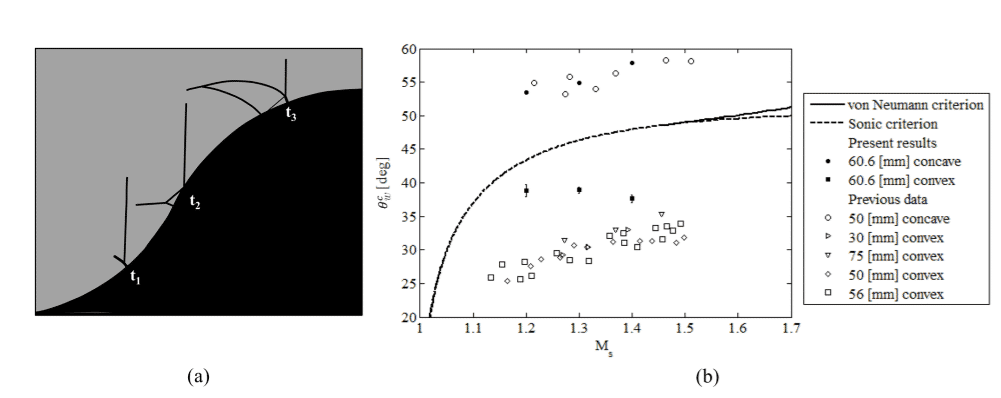Understanding the reflection mechanism and a proper prediction of the reflection locations are crucial in many engineering aspects. These reflections change the pressure distribution both in space in time which are common near explosions or in supersonic/ hypersonic aircraft design. The reflection phenomena are the mechanisms by which the supersonic flow negotiates the obstacle when it propagates towards one. The unsteady reflections in contrast to the steady/pseudo-steady is extremely complicated since the shock wave is constantly adjusting to new boundary conditions. The non-stationary transition from Mach to regular reflection followed by a reverse transition from regular to Mach reflection is investigated experimentally. Experiments were carried in air at three different shock-wave strengths. A model consists of a concave cylinder segment followed by a convex cylinder segment was used. This model enabled for the first time to analyze the transition from MR→RR and the successive reverse RR→MR transition under the same flow conditions. Based on the present pioneering study a non-stationary hysteresis phenomenon exists. Under the same flow conditions multiple shock configurations could take place. These findings suggest that complex flow profiles that result from shock configurations cannot be determined only from the boundary and initial conditions. One must follow the history of the process. The hysteresis phenomenon in a transient flow was observed at considerably smaller incident-shock-wave Mach numbers than those obtained in steady flows. Load durability requirements and evaluations of flight performance at supersonic speeds must be based on the entire process and not only the temporary conditions.


